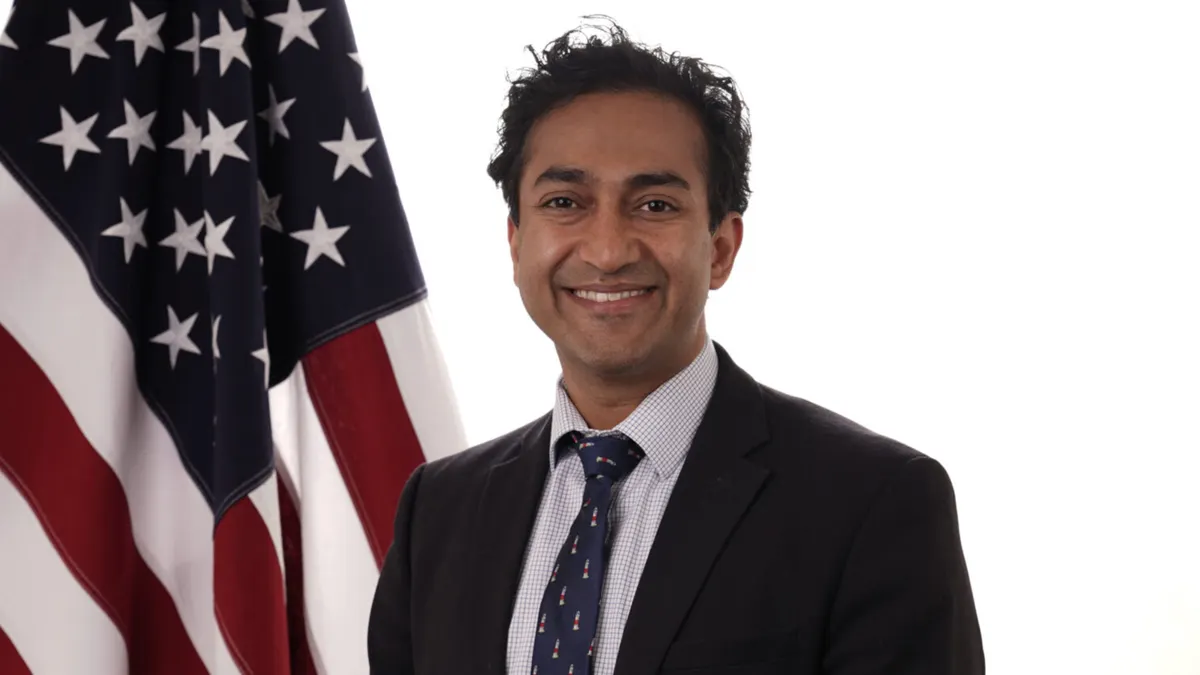 Oncology trials are different from trials in other therapeutic areas. They are often more complex, involve adaptive design, and can include biomarker and companion diagnostics. They require CROs with therapeutic experience and the knowledge and skills to address these more complex studies.
Oncology trials are different from trials in other therapeutic areas. They are often more complex, involve adaptive design, and can include biomarker and companion diagnostics. They require CROs with therapeutic experience and the knowledge and skills to address these more complex studies.
Cancer is not a single disease, says Andrew Zupnick, Ph.D., senior director, oncology division, at Novella Clinical.
“Cancer is distinct in that the biology behind what’s occuring in the cell can be a collection of hundreds of different diseases," he says. “There is a great deal of complexity within genetic mutations and the epigenetics that contribute to what manifests as cancer. There are a number of redundant pathways in cancer that can develop over time and mutations can lead to treatment resistance."
Cancer remains the biggest portion of the overall drug development pipeline in the earlier phases with four times the number of drugs in the pipeline than the next largest therapeutic class, according to IMS Institute for Healthcare Informatics. After an innovation slowdown through 2008, the oncology pipeline has increased with more accelerated approvals (34% of breakthrough therapy designations are for cancer) and a shift to non-biologics.
But there are fewer cancer drugs progressing to Phase II and III trials, which indicates both the high levels of early-phase activity and the 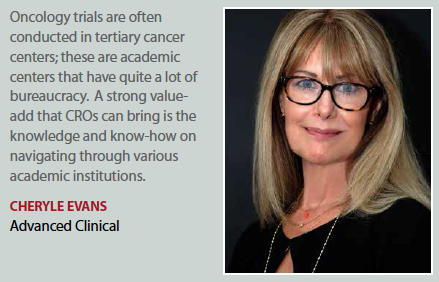 difficulties in generating successful results in the clinic, according to IMS.
difficulties in generating successful results in the clinic, according to IMS.
Many of the medicines in the pipeline today are using novel approaches to attack cancer at the molecular level. About 80% of cancer pipeline drugs are potentially first-in-class treatments, according to the Tufts Center for the Study of Drug Development.
The differences start in Phase I trials, says Dr. Keren Moss, senior medical director of global oncology and hematology, at INC Research.
“Oncology trials generally involve patients who have cancer instead of healthy volunteers," she says. “We have Phase I units in the hospitals so it’s a very different ball game in terms of how the studies are managed."
Oncology trials are often conducted in tertiary cancer centers, which often have quite a lot of bureaucracy, says Cheryle Evans, VP clinical operations at Advanced Clinical.
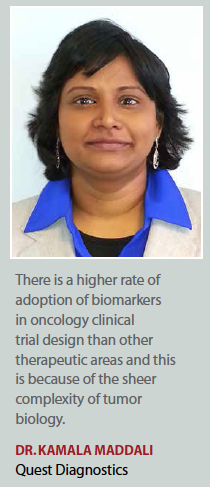 “This presents challenges," she says. “CRAs have to be familiar with the institutions and have established relationships with study coordinators. While it’s great to have relationships with the investigators, it’s really the study coordinators and the support research staff who are recruiting subjects, driving enrollment, and publicizing the study."
“This presents challenges," she says. “CRAs have to be familiar with the institutions and have established relationships with study coordinators. While it’s great to have relationships with the investigators, it’s really the study coordinators and the support research staff who are recruiting subjects, driving enrollment, and publicizing the study."
Dr. Moss says INC Research looks for sites that are experienced in oncology clinical trials because there is an extra layer of complexity in cancer clinical trials.
“Many oncology centers will have a clinical trial unit with dedicated personnel," she says. “We’re looking to see what the experience of the site is in terms of conducting trials and what type of dedicated resources they have in terms of study coordinators, research nurses, etc. We also consider the facilities at the sites. Oncology clinical trials require imaging, pathology, labs, and so all of that needs to be taken into consideration in selecting the right site for the study."
A good relationship with investigators is paramount across a broad range of oncology indications, both solid and liquid tumors. Familiarity with the multi-departmental structure to ease the administrative complexities is required.
A deep appreciation of regulatory requirements for oncology development, understanding the nuances, for example of genetic testing and genetic counseling are necessary.
“Functional groups, including data management, statistics, medical imaging, and clinical monitoring must understand the complexities and inter-relationships with many data points and the impact on data quality and interpreting information from site to clinical study report," says Dr. Martin Lachs, VP, project management, oncology and hematology, at ICON.
Experts say in addition to the technologies and design expertise, CROs need a large database and broad experience with potential study sites across the globe. A global footprint is highly desirable.
In May, Clinicaltrials.gov listed almost 27,000 trials for cancer in the United States and 19,000 trials around the globe. This global diversity speaks to the need for CROs to have experience and expertise executing trials in different regions of the world.
Dr. Moss says it’s important to understand the different standards of care globally when conducting oncology trials.
“When placing complex oncology trials into multiple countries, it is critical to understand local standard of care especially if the treatment protocol clashes with the standard of care," she says. “In many disease settings there are no uniform approaches on best practices, such as which combinations or sequences of drugs need to be used in which line of therapy. So both global and local knowledge is needed in order to ensure clinical trial protocols are appropriate for specific target countries."
Increasing Complexity of Protocols
Clinical success rates for new cancer drugs doubled between the mid-1990s to the early 2000s, while the number of new cancer drugs entering clinical testing increased 50% during the same time, according to a 2013 analysis by the Tufts CSDD.
Clinical success rates — which reflect the share of investigational new compounds entering clinical testing that eventually obtain marketing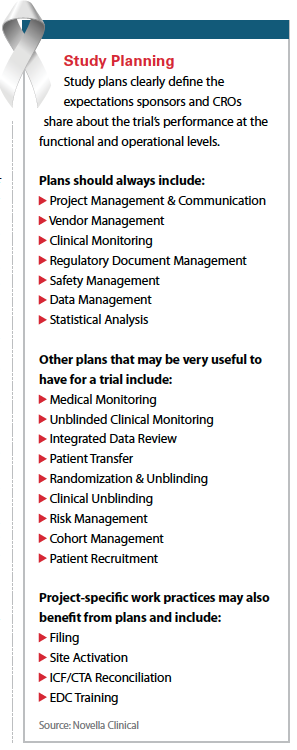 approval from the U.S. Food and Drug Administration — rose from 9.9% in the mid-1990s to 19.8% in the early-2000s, the Tufts study found.
approval from the U.S. Food and Drug Administration — rose from 9.9% in the mid-1990s to 19.8% in the early-2000s, the Tufts study found.
Although there have been notable advances across a number of oncology indications over the past five years, cancer treatment remains a broadly unmet need, experts say.
“Advances have been incremental with respect to improved survival more than breakthrough, although recent developments in immunotherapies have been more impressive," Dr. Lachs says. “Progression-free and disease-free status have been improved but treatments are rarely curative."
For all studies, global clinical trial performance and efficiency are hampered by high turnover and noncompliance among principal investigators and wide variation in investigative site experience, according to a recently completed assessment by the Tufts CSDD.
While the number of investigators globally now stands at nearly 40,000, a record, half of them were new to the job in 2013, the most recent year for which data are available, according to Tufts CSDD. In addition, although the highest turnover rates are observed among the least active investigators, turnover rates have been getting progressively worse among more active investigators.
At the same time, protocol noncompliance, the most common performance deficiency and one that has grown the fastest during the past decade, accounted for 46% of all investigative site deficiencies, Tufts CSDD said.
Oncology studies are complicated by the rapidly growing understanding of the biology of cancer. Treatments are increasingly targeted to the molecular triggers that cause normal cells to become cancerous. Researchers are using new technologies from the fields of computational chemistry, imaging technology, nanotechnology, health information technology, and genetic engineering to create therapies that target the multiple pathways that drive a patient’s cancer.
Oncology drug development is at the high end of development costs. A 2014 Tufts study suggests that cost from concept to market for developing a drug is $1.4 billion.
Industry experts say one way to address spiraling development costs and access to patients is to perform fewer clinical studies, with fewer patients but increased statistical power. Adaptive clinical trial design is slowly being adopted and has the capability of facilitating earlier and more robust decisions on the direction of a drug’s development, which can reduce the in-built cost of failure.
“Clinical programs that use adaptive designs overall are shorter and more efficient," Dr. Lachs says. “Fewer patients also means that investigator burden and costs for reimbursing hospitals for their participation in studies — a very significant cost as a whole for clinical trials — is reduced."
Dr. Lachs says oncology clinical trials are inter-disciplinary in nature and require coordination of many hospital departments, including laboratories, imaging, surgery, medical oncology, pathology, etc.
“From the contracting process to study administration to maintaining quality of data, this is exceptionally challenging," he says. “The multi-disciplinary component of oncology studies feeds into the complexity of data collection whereby medical records and source data verification can require a higher level of monitor training and a higher degree of medic review of the data to ensure standards and statistical validity of participating subjects."
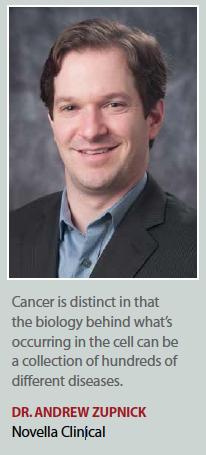 Industry experts say in spite of the continued pressure for novel cancer treatments the percentage of patients who participate in clinical trials remains surprisingly small.
Industry experts say in spite of the continued pressure for novel cancer treatments the percentage of patients who participate in clinical trials remains surprisingly small.
“In the United States, it’s as low as 3% although in the UK it is an impressive 17%," Dr. Lachs says. “In part, this is an emotional issue but also because oncology studies are often long and complex with many treatment and assessment interventions requiring many hospital visits. Side effects require a multitude of concomitant medications to manage. All of this puts a strain on patients — and their willingness to participate — as well as on physicians who have to bear the resource and administrative burden for running trials that often exceed those associated with trials in other indications. The consent process is more confusing for patients and more demanding for the treating physicians. Multiple consent forms may be required to account for genetic testing that needs to accompany studies with a targeted therapy approach."
Low patient and physician participation rates lead to delays in completion or even cancellation of trials. It is estimated that less than 5% of adult cancer patients participate in clinical trials, due to factors including extensive exclusion criteria, low physician and patient awareness, uncertainty about insurance coverage and other barriers, according to the American Society of Clinical Oncology.
The Role of Genomics
Dr. Zupnick says genomics profiling has changed oncology trials, and the concept of oncology is shifting away from being tissue specific.
“Trials are starting to treat patients with drugs that address the genetic profile of cancer as opposed to where it is in the body," he says. “We’re going to see more drugs that are highly targeted to specific genetic mutations and thus there may be smaller patient populations that offer the right fit for oncology clinical trials."
There is a higher rate of adoption of biomarkers in oncology clinical trial design than other therapeutic areas and this is because of the sheer complexity of tumor biology. There is also a higher rate of FDA approved companion diagnostics, with 18 of the 19 approved for oncology, says Kamala Maddali, Ph.D., director of scientific development, Quest Diagnostics Clinical Trials.
“The genomics data of a patient provides insights into novel drug targets and mechanism of action," she says. “Pharma is incorporating biomarker strategies earlier to measure clinical responses and successful outcomes.Biomarkers are used to identify the right patient to include in clinical trials to ensure optimal response to investigational therapy. This has paved the way for personalized/precision medicine in oncology."
CROs need to have not only therapeutic area expertise but also oncology clinical trial experience and biomarkers and companion diagnostics expertise, especially in genomics, Dr. Maddali says.
Oncology studies are heavily reliant upon end-point analysis, be it imaging end-points or adjudication across multiple end-points types, Dr. Lachs says.
“Oncology needs to rely upon a greater number of surrogate end-points such as pharmacodynamics or prognostic biomarkers," he says. “Access to competent imaging analysis that can turn around data quickly to inform on treatment decisions is often the preserve of oncology clinical trials as is access to validated testing of a growing panel of biomarkers that may also be required as co-diagnostics as demanded by the regulators."
There are many lessons learned that can be culled from a CRO’s experience and oncology portfolio, Dr. Zupnick says.
“There are corporate lessons learned from CROs with the infrastructure in place to capture and distill these learnings back to other team members," he says.
“There are a number of challenges we can help sponsors proactively address," he continues. “If engaged early, the CRO can hlep develop strategies around study trend lines, which countries to engage, and how to write inclusion/exclusion criteria based on standard of care. Sponsors can gain valuable knowledge from the CRO’s previous work." (PV)










